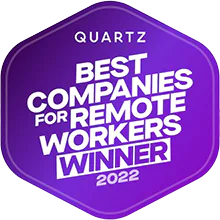Wonolo
When you talk about trends in 2019, there may be a few outliers that come to mind. Of course the gig economy is growing, but perhaps most noteworthy is the rate of adoption by the masses.
It only takes a quick look back in time to recall the exact moments that shaped the face of our workforce. World War I brought with it the beginning of what at the time was thought to be only temporary: when women became the primary breadwinners…and then kept on working! Couple that with our tumultuous history with systemic inequalities that left the playing field more than unequal and well folks, we’ve had ourselves an interesting past to say the least.
All of that is to note that times are changing. Of course, things like equal pay and greater access to work, specifically for diverse and marginalized groups, will always be a cause to watch. That aside, the stakes are becoming increasingly equal on many fronts and here is why.
If we look at what is considered the working population in America, that is essentially classified as people 15-65. That’s a significant spread given the additional breakdowns in education, location, industry, and so on. This is particularly noteworthy when you look at who makes up the gig economy. If you guessed 18-65 you’d be correct. Traditionally, you could look at most industries as a whole and make some assumptions about the operators. While this may still be the case in some instances, when it comes to the gig economy all rules are out the door.
Your late night ride-share driver is likely someone’s mother looking to fit in a few extra hours of
There is no one type of person who fits the bill and moreover, gig work is readily available to all. Which is what is so phenomenal about th industry. This wasn’t supposed to happen. This isn’t how our system is set up. We are meant to think that there should be a barrier to entry to work. Someone needs to grant permission. Welp, spoiler: that’s simply not the case anymore.
Gig work is flipping the script on who can work, where they can work, and when they can work. Soccer mom needing to shift your schedule to make games and practices? No problem. Full-time worker wanting to stack some extra cash on the weekends? Come on over, the apps are plentiful.
Beyond that, businesses are becoming increasingly trusting, and reliant on said apps to fuel their companies. A survey as recent as 2017 counted nearly 60 million Americans, a whopping 36% of the workforce, were contract workers.
Given the range of possibilities for work that falls out of the brackets of traditional, this trend should be taken seriously as it’s one that’s


![[Report] Beyond the Gig: Exploring Reliable Work Options for the Modern Workforce](https://info.wonolo.com/wp-content/uploads/2023/10/Worker-Preferences-Report-Header-Image-500x383.png)



